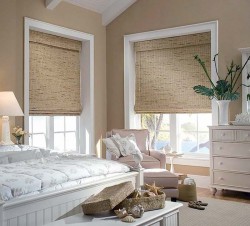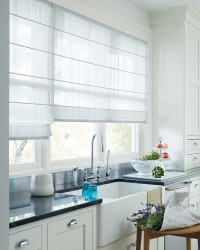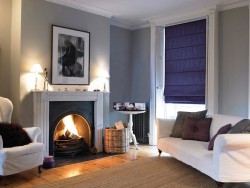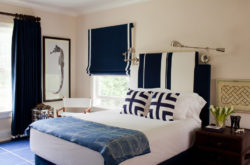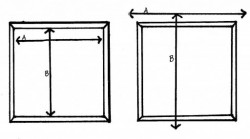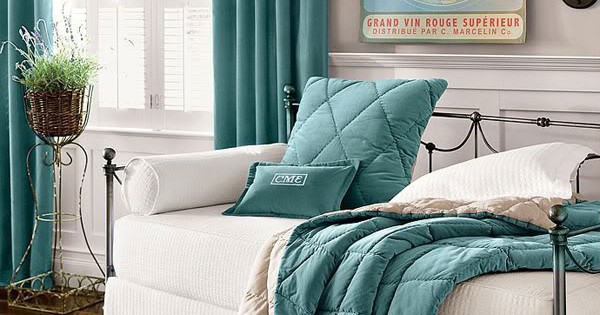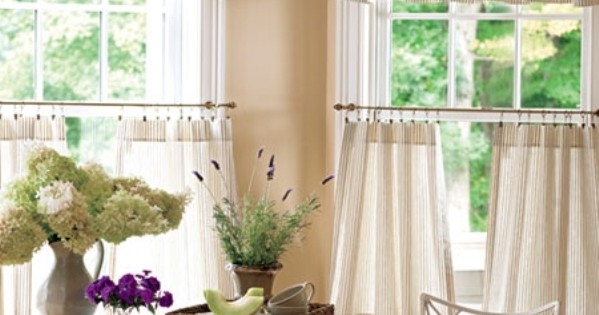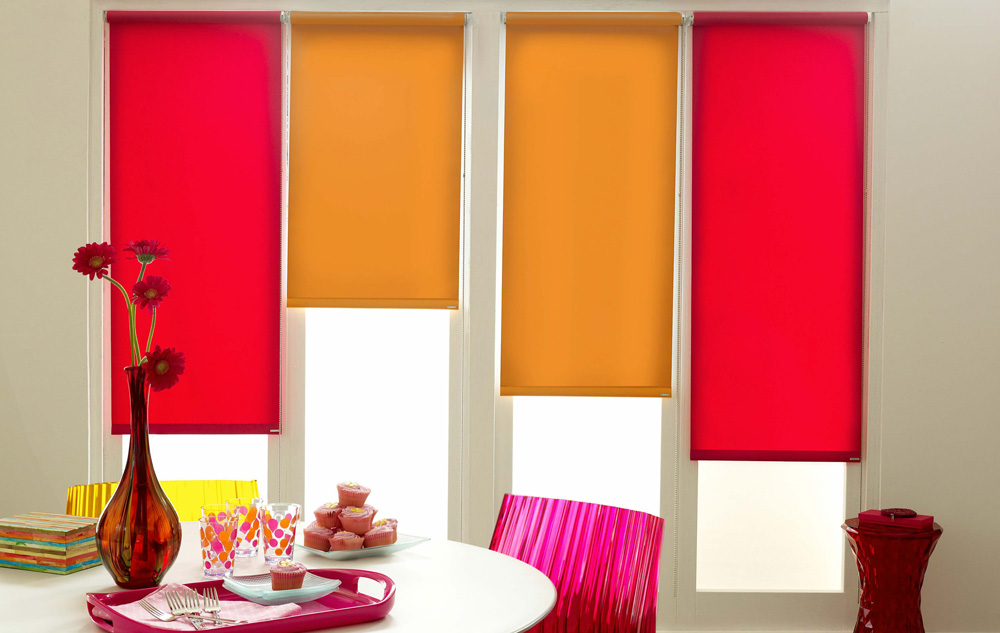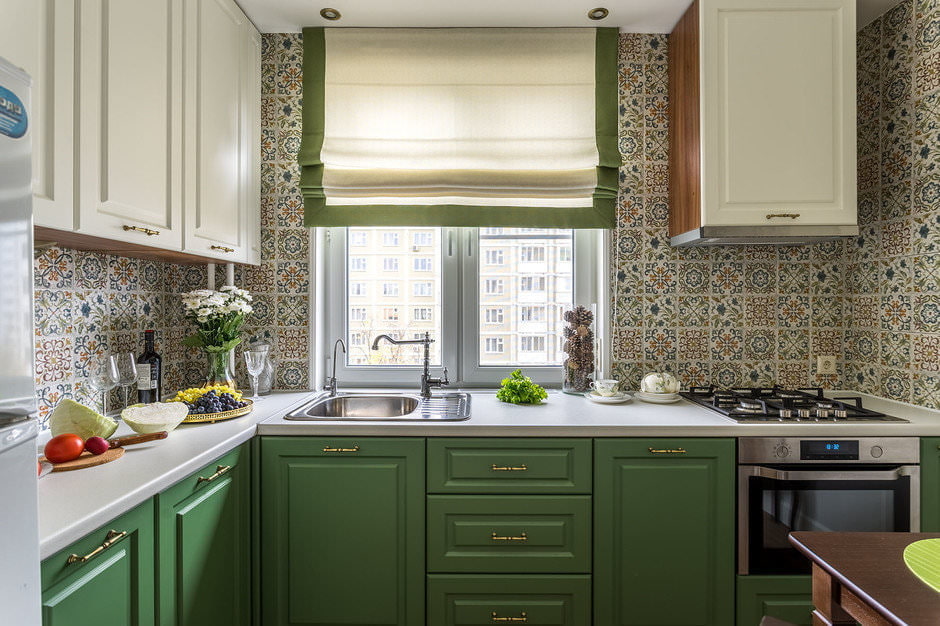How to choose Roman curtains: design, fabric, color, features
Today, Roman curtains are only gaining their popularity in our country, replacing already fed up with artsy lambrequins, velvet curtains and curtains. Roman curtains are simple and concise, style and comfort. They are as simple as possible to operate and maintain, use a minimum of fabric, but can be completely different. Their main advantage - the ability to successfully fit into almost any interior from classic to modern. Despite the fact that we are now considered a rather rare decoration of a horse on Roman curtains, the assortment can still amaze an unprepared person and put them in a stupor. To make choosing the right model easy, you need to know in advance what Roman curtains are, from what fabrics they are sewn, how best to care for them, and how the color will fit in each particular room.
Features and Benefits
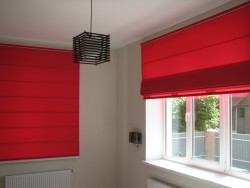 For starters, it’s not a problem what are roman curtainswhat they consist of and due to what properties they have earned such wide popularity. History such products began in ancient Rome, where such window decoration was available only to the most affluent segments of the population. It was always very hot and sunny there, and the most enterprising and resourceful came up with the use of dense pieces of fabric in order to protect their home from the scorching rays of the sun. According to another version, in the hot Italian climate of those years, with the abundance of stone houses it was unbearably dusty, and so as not to let dust into the house, women began to hang wet pieces of fabric. But in order to be able to use the window opening, they made the design of such curtains sailing. This idea is the basis of modern Roman curtains.
For starters, it’s not a problem what are roman curtainswhat they consist of and due to what properties they have earned such wide popularity. History such products began in ancient Rome, where such window decoration was available only to the most affluent segments of the population. It was always very hot and sunny there, and the most enterprising and resourceful came up with the use of dense pieces of fabric in order to protect their home from the scorching rays of the sun. According to another version, in the hot Italian climate of those years, with the abundance of stone houses it was unbearably dusty, and so as not to let dust into the house, women began to hang wet pieces of fabric. But in order to be able to use the window opening, they made the design of such curtains sailing. This idea is the basis of modern Roman curtains.
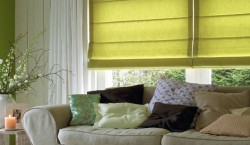 Today the Roman curtain is a piece of fabric, the upper edge of which is bent, and an insert is inserted into it, which is then attached to a special cornice. The lower edge of the fabric is equipped with a small weighting agent so that the curtain holds the correct shape. Special solid inserts are threaded into the fabric at a certain distance from each other. They help the curtain to gather in spectacular folds when it is lifted, and when the curtain is in the closed state, these inserts are not noticeable, and the fabric just tightly closes the window opening from the rays of the sun and the eyes of strangers. You can even lower the Roman curtain completely, plunging the room into twilight, at least completely raise it, letting in the maximum amount of light, or leave it somewhere in the middle, regulating the flow of sunlight.
Today the Roman curtain is a piece of fabric, the upper edge of which is bent, and an insert is inserted into it, which is then attached to a special cornice. The lower edge of the fabric is equipped with a small weighting agent so that the curtain holds the correct shape. Special solid inserts are threaded into the fabric at a certain distance from each other. They help the curtain to gather in spectacular folds when it is lifted, and when the curtain is in the closed state, these inserts are not noticeable, and the fabric just tightly closes the window opening from the rays of the sun and the eyes of strangers. You can even lower the Roman curtain completely, plunging the room into twilight, at least completely raise it, letting in the maximum amount of light, or leave it somewhere in the middle, regulating the flow of sunlight.
Features of the design of Roman curtains determine great amount the benefits:
- space saving. Since the Roman curtain is a small piece of fabric, which when folded and when unfolded takes up little space, it will not take up space, which is typical, for example, for massive curtains. That is why it is advantageous to equip rooms that are not very large in size with precisely such curtains that will cope with all the necessary functions, but at the same time take up a minimum of usable space;
 simplicity in management. Although there are several options for managing Roman curtains, which we will discuss later, all of them are most convenient and easy to manage.In order to open the curtains, you just need to pull on the lace, which will immediately activate the entire structure. Even a child can handle this, so Roman curtains often become an adornment of children's rooms as well;
simplicity in management. Although there are several options for managing Roman curtains, which we will discuss later, all of them are most convenient and easy to manage.In order to open the curtains, you just need to pull on the lace, which will immediately activate the entire structure. Even a child can handle this, so Roman curtains often become an adornment of children's rooms as well;- simplicity in leaving. Since fabric for Roman curtains requires a little, then it does not collect so much dust. In addition, there are models that are additionally impregnated with special substances that repel dust and dirt - an excellent option for such rooms, toak kitchen. If the curtain has become a little dirty, then it is simply removed from the cornice and washed gently - that’s all care;
- laconic form - Another plus of Roman curtains. There are no extra elements, and the main trump card is strict geometry combined with the formation of spectacular folds;
- opportunity combine with any type of interior gives Roman curtains special multifunctionality. In addition, they can be combined with other types of window opening decorations, for example, with hailstones - it turns out quite unusual and stylish. This option solves all issues when, for example, you need a lot of light in a room, and a fully open window leaves you feeling uncomfortable and insecure;
- roman curtains reliably protect from the sun, prying eyes from the street, retain heat in the summer and cold in the winter, therefore, with those functions that are assigned to the curtains, they cope with a bang;
- variety of colors and designs. For your curtains, you can choose any pattern, even make an individual order. In addition, for rooms that are too sunny, you can choose denser curtains, and for shade rooms - translucent, which will serve more as a decorative element than a functional one;
- ease of installation, since Roman curtains can be attached to the ceiling, and walls, and even to the window.
Models of Roman Curtains
The design of the Roman curtains remains simple and intuitive in any case, but still there are some variations that differ in complexity:
 rope constructions. In this case, transparent or translucent fabrics are used - the lightest materials, so that you can use the rope structure, thanks to which you can easily control the curtains;
rope constructions. In this case, transparent or translucent fabrics are used - the lightest materials, so that you can use the rope structure, thanks to which you can easily control the curtains;- rotor chain construction in many ways resembles the principle of action jalousie. When you pull the chain, it acts on the rotary shaft and on the rotor blocks, so that the whole structure comes into motion. This is a fairly reliable fastening system, which withstands not only thin airy fabrics, but also dense and even the heaviest tapestries;
- combined option It is used when several fabrics are used in the design of Roman curtains. Then a system of several rotor-chain mechanisms, rope mechanisms, or both of them can be used;
- elementary model rarely used, as it is not very strong and durable, but relatively inexpensive. It uses ropes and interconnected trims.
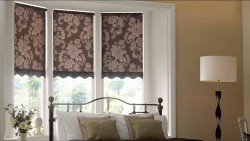 Another design difference is that you can control the curtains as manuallyso and using the remote control. But in the latter version, it will be necessary to fix an electric motor on the ledge, which will do all the work for you.
Another design difference is that you can control the curtains as manuallyso and using the remote control. But in the latter version, it will be necessary to fix an electric motor on the ledge, which will do all the work for you.
According to the type of formed folds, Roman curtains can be:
- classic - the most common option. Then, when raising the curtains, folds of fabric overlap each other. This is a universal option that fits any type of interior;
- cascading curtains - a variation in which a little more fabric is used in each fold, so when folding, spectacular folds are formed. This is a good option for rooms made in a romantic style.
Fabric selection
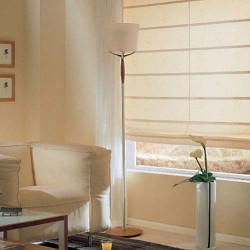 Roman curtains can be made from almost any fabric, and even do it yourself easily. First you need to decide what density do you need fabric on the curtains, which depends on what result you want to get, what natural light in the room, etc. If the room is south, and a lot of sun and heat gets there, if we are talking about country houses, about the southern regions of the country, then it is better to choose dense tissues. They will maximally obscure the room and protect from heat - in general, they will fully comply with their original purpose. Another option for this case - curtains black out, which are made of dense material, and on the wrong side are impregnated with special substances that prevent burnout. Such models give the greatest shading.
Roman curtains can be made from almost any fabric, and even do it yourself easily. First you need to decide what density do you need fabric on the curtains, which depends on what result you want to get, what natural light in the room, etc. If the room is south, and a lot of sun and heat gets there, if we are talking about country houses, about the southern regions of the country, then it is better to choose dense tissues. They will maximally obscure the room and protect from heat - in general, they will fully comply with their original purpose. Another option for this case - curtains black out, which are made of dense material, and on the wrong side are impregnated with special substances that prevent burnout. Such models give the greatest shading.
In many regions of our country, it is not so hot and sunny to protect yourself from so long-awaited rays and warmth, therefore, there Roman blinds can be used only for decorative purposes and choose transparent or translucent fabrics. But this option will reliably protect you from the eyes of passers-by, so this is a great option for residents of the first floors.
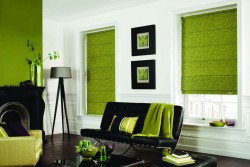 If you want the room to be as natural and environmentally friendly as possible, then you will choose natural fabrics. They do not cause allergies, they are pleasant to look and touch, but require a competent approach to care - then they will last you a long time and will remain in their original form for many years. Synthetic fabrics They are very diverse and easy to care for: they often do not wrinkle, do not get dirty so quickly, they are easier to wear off and dry faster.
If you want the room to be as natural and environmentally friendly as possible, then you will choose natural fabrics. They do not cause allergies, they are pleasant to look and touch, but require a competent approach to care - then they will last you a long time and will remain in their original form for many years. Synthetic fabrics They are very diverse and easy to care for: they often do not wrinkle, do not get dirty so quickly, they are easier to wear off and dry faster.
In stores you can find a huge number of possible options for Roman curtains made from different fabricsbut all the following fabrics became the most popular:
- linen - tissue obtained from the same plant. It is hypoallergenic, environmentally friendly and safe, looks beautiful, fits perfectly into any interior. Flax is great for the bedroom and living room, but on the kitchen will cause a lot of difficulties, as it is able to absorb various odors, and its washing takes a lot of time. Moreover, it is necessary to dry such curtains extremely carefully, otherwise wrinkles may form, which then cannot be ironed with a single iron. Therefore, immediately after washing, such curtains are recommended to be hung on the window, and a basin should be placed at the bottom so that there is glass of water;
 cotton - Another natural fabric that is often used in the manufacture of Roman curtains. Cotton is beautiful, environmentally friendly, creates an atmosphere of home coziness and comfort. Cotton curtains will be most appropriate in living rooms, bedrooms, children's rooms, but in the kitchen, especially close to the work area, it is better not to hang them. They are not only able to absorb odors, but also become thinner when washed under the influence of chemicals. Therefore, frequent washing, which is inevitable for curtains hanging in the kitchen, will quickly lead to the loss of its original appearance;
cotton - Another natural fabric that is often used in the manufacture of Roman curtains. Cotton is beautiful, environmentally friendly, creates an atmosphere of home coziness and comfort. Cotton curtains will be most appropriate in living rooms, bedrooms, children's rooms, but in the kitchen, especially close to the work area, it is better not to hang them. They are not only able to absorb odors, but also become thinner when washed under the influence of chemicals. Therefore, frequent washing, which is inevitable for curtains hanging in the kitchen, will quickly lead to the loss of its original appearance;- synthetic materials - ideal for the kitchen. Such curtains will not absorb odors, often saturated with special substances that repel dust and dirt. They are extremely easy to care for and remain as good as new;
- mixed fabrics - the golden mean for those who want to combine the comfort of synthetic fabrics and the beauty of natural in Roman curtains. Here, natural threads are intertwined with synthetic ones, so that in the end an ideal result is obtained.
 It is worth noting that Roman curtains - the most economical of all types of curtains, and the consumption of fabric for their sewing is minimal. That is why you can choose among quite expensive designer fabrics, because you will need a very small segment, in contrast, for example, from the required amount of fabric for curtains or curtains.
It is worth noting that Roman curtains - the most economical of all types of curtains, and the consumption of fabric for their sewing is minimal. That is why you can choose among quite expensive designer fabrics, because you will need a very small segment, in contrast, for example, from the required amount of fabric for curtains or curtains.
Roman curtains can be double or single. The first option is preferred for dense fabrics, where the back layer protects the core from burnout. Single curtains are appropriate if they are light fabrics with print, translucent or transparent materials such as organza or veil.
Color and design
There are a lot of possible options for Roman curtains: they can be monophonic, have a floral print, stains, patterns, be made in a cage or strip, be bright or light, etc. The main thing is not to get lost among all this diversity and choose exactly the option that will be most appropriate in your case.
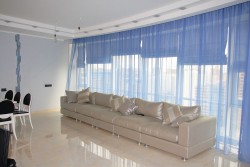 Naturally, there are no clear rules about what curtains should be in each case, since a huge number of factors must be taken into account, but still some nuances should be considered when choosing. So, the main ones:
Naturally, there are no clear rules about what curtains should be in each case, since a huge number of factors must be taken into account, but still some nuances should be considered when choosing. So, the main ones:
- if the room is small, then it is better to choose a plain curtain or with a minimum of drawings. The color is selected under wall colorto visually expand the space;
- for small rooms light pastel shades for spacious rooms you can already try experimenting with dark and rich shades that look elegant and rich, especially in the living room or office;
- pay attention to striped curtains: a vertical strip will add a few centimeters in height, and a horizontal one will make the room a little wider and larger;
 if the area of the room allows, then you can choose curtains with a bright interesting pattern that will add dynamism and positive to the room. Patterns and drawings on the curtains will be appropriate even when the finish is smooth and plain. And vice versa, if there are so many various drawings on the wall, on the furniture, then it is better not to overstrain the space and choose plain curtains;
if the area of the room allows, then you can choose curtains with a bright interesting pattern that will add dynamism and positive to the room. Patterns and drawings on the curtains will be appropriate even when the finish is smooth and plain. And vice versa, if there are so many various drawings on the wall, on the furniture, then it is better not to overstrain the space and choose plain curtains;- if the room does not have one color scheme, then it is better to choose the color of Roman curtains, starting from the color of the object that occupies the most space: furniture, textiles, flooring, etc. But be careful with dark shades, which in combination with dark furniture or dark walls can make the room gloomy;
- choosing different colors Roman curtains can be added to any interior;
- lower edge of roman curtains can remain ordinary - this is appropriate in most interiors, but it can be decorated with beads, lace, beads, fringe, etc.
Interior Style and Room Type
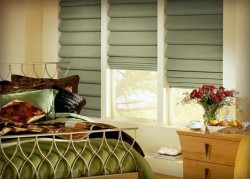 Roman curtains are absolutely appropriate in any type of interior, you just need to give them a certain mood, add details or color accents. So, plain saturated or pastel curtains will perfectly fit into classic interiorwhere can be supplemented by curtains and translucent curtains.
Roman curtains are absolutely appropriate in any type of interior, you just need to give them a certain mood, add details or color accents. So, plain saturated or pastel curtains will perfectly fit into classic interiorwhere can be supplemented by curtains and translucent curtains.
If you choose curtains in a cage, with a gastronomic pattern or in stripes, we get an excellent decoration of the room in the style provence or country. A geometric pattern and plain, calm, but deep colors are a good option for minimalism.
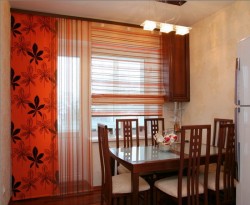 Roman curtains - a win-win option for any type of room. So, in the bedroom more dense Roman curtains will become reliable protection from sunlight, can be complemented by other types of curtains, and may be the only window decoration. In the living room, Roman curtains can become a highlight of the whole interior if you choose some interesting pattern or color for them. For children's rooms, you can choose Roman curtains with a bright pattern or heroes of fairy tales. Finally, Roman blinds are simply perfect for the kitchen, as they do not take up much space. They can be quickly modified, and synthetic fabrics are also very easy to care for. In offices and offices, Roman blinds are appropriate due to their minimalism and conciseness, ease of operation, so you can choose any calm color and give the working room an additional style and comfort.
Roman curtains - a win-win option for any type of room. So, in the bedroom more dense Roman curtains will become reliable protection from sunlight, can be complemented by other types of curtains, and may be the only window decoration. In the living room, Roman curtains can become a highlight of the whole interior if you choose some interesting pattern or color for them. For children's rooms, you can choose Roman curtains with a bright pattern or heroes of fairy tales. Finally, Roman blinds are simply perfect for the kitchen, as they do not take up much space. They can be quickly modified, and synthetic fabrics are also very easy to care for. In offices and offices, Roman blinds are appropriate due to their minimalism and conciseness, ease of operation, so you can choose any calm color and give the working room an additional style and comfort.
Mounting method
No matter how beautiful, stylish and original the Roman curtain would be, in any case it should correspond to the size of the window opening and successfully fit into it. Otherwise, all efforts with the choice of fabric and pattern will go down the drain.
Today, there are two most common ways to fix the Roman curtain on the window:
 in the window opening - this option is most preferred when windowsill wide enough, because extra centimeters of space can sometimes be very helpful. This method involves mounting on the window itself and letting the curtains on the glass. They also resort to it when Roman curtains are used in conjunction with other window decor: curtains, drapes, lambrequins, etc. In this case, the width and length of the curtain should fully comply with the parameters of the window opening.
in the window opening - this option is most preferred when windowsill wide enough, because extra centimeters of space can sometimes be very helpful. This method involves mounting on the window itself and letting the curtains on the glass. They also resort to it when Roman curtains are used in conjunction with other window decor: curtains, drapes, lambrequins, etc. In this case, the width and length of the curtain should fully comply with the parameters of the window opening. over the window opening on the wall. This method is used when there are window panes on the window or it often needs to be opened to ventilate. In this case, the curtain should be wider than the window by 10-15 cm to tightly cover the opening and not to let in the sun's rays into the room, and 10-15 cm longer on each side. This is necessary so that the curtain closes the window well in the free state, and so that, when folded, the curtain hides above the opening and does not interfere with opening the window.
over the window opening on the wall. This method is used when there are window panes on the window or it often needs to be opened to ventilate. In this case, the curtain should be wider than the window by 10-15 cm to tightly cover the opening and not to let in the sun's rays into the room, and 10-15 cm longer on each side. This is necessary so that the curtain closes the window well in the free state, and so that, when folded, the curtain hides above the opening and does not interfere with opening the window.
Caring for Roman Curtains
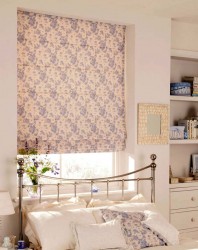 Synthetic fabrics are especially easy to operate. It is enough to remove curtains from such materials from the eaves, remove all weighting bars and wash in the washing machine. Especially delicate fabrics are best washed by hand, but it is very important to rinse the curtain well so that it does not leave soap stains.
Synthetic fabrics are especially easy to operate. It is enough to remove curtains from such materials from the eaves, remove all weighting bars and wash in the washing machine. Especially delicate fabrics are best washed by hand, but it is very important to rinse the curtain well so that it does not leave soap stains.
It is best to dry Roman curtains in a straightened form or already right on the window, and you can iron even in a wet state, and if there is embroidery on the fabric, then on the wrong side.
Finally
Roman curtains - a combination of the same advantages. These are easy-to-care, beautiful and durable curtains that amaze many with their unusual appearance. When choosing them, the main thing remember all the nuances of the room for which they are selected, and try to purchase an option that would fit as much as possible into the existing interior - then the Roman curtains will show all their advantages and will always please the eye.

